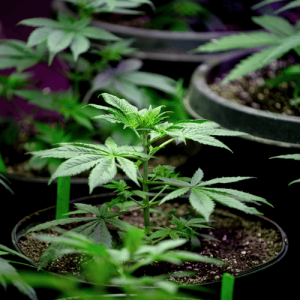Everything you need to know about cannabis
Application, effect and chemical composition, where it grows, a brief history and systematics: the relationship of cannabis seed with sativa, indica, ruderalis and technical cannabis - everything is in more detail in this article.
Systematics: what is “cannabis seed” and what does sativa have to do with it
Calling indica and sativa types of cannabis is a misnomer. In fact, these are subspecies of hemp - cannabis sativa. According to modern botanical taxonomy, this is the only species of the Cannabis genus of the Cannabis family. In her subspecies, “Indian hemp” is the same “indica” and ... Again, “cannabis seed” is sativa.
At the same time, the type of cannabis sativa corresponds to everything that we know about sativa varieties: a high concentration of THC and, accordingly, a strong stimulating effect, high growth, growth in countries with a mild, predominantly tropical (or subtropical) climate. Another "subspecies" known to cannabis growers - ruderalis, that is, "weed hemp", is not recognized by most taxonomists. In their understanding, this is the same plant as the subspecies "hemp".
When we talk about the "cannabis plant" species, we are talking about both indica and sativa marijuana - plants with a psychoactive effect - but also "technical hemp", which combines varieties that are allowed to be grown even in countries with banned cannabis. This hemp contains virtually no THC, and the circulation of this particular substance is under the control of supervisory authorities.
What history says
The earliest evidence of the use of cannabis, not only as a valuable raw material, dates back to 5500 BC. Findings from the Stone Age confirm that even then our ancestors used it to obtain a psychoactive effect, usually for ritual purposes. Herodotus and Democritus wrote about it, and Galen described the daily use of cannabis in Italy, where sativa was considered "the patroness of good mood." Many artifacts (smoking pipes and other devices), mainly for the ritual use of hemp, are found in Africa, the birthplace of many sativa landraces. Cannabis blooms were found in Celtic and Germanic graves, and most Egyptian mummies were filled with hashish.
Distribution and appearance
Sativa subspecies of cannabis sativa came from regions with a hot climate. Mexico, Colombia, Thailand, Africa, Brazil - hence the largest number of known sativa landraces. Indica marijuana was most common in Pakistan, Afghanistan, Nepal, Morocco, India. The region of Central Asia is also considered the birthplace of hemp.
Hemp is a weakly branched plant, averaging about 150 cm tall, with long internodes and large carved leaves. This is a general description of the species, so that the indica subspecies is more bushy, its color is darker and more saturated, and the root system, unlike the Sativa stem, is wider. In addition, sativa plants can grow up to 3-4 meters tall, while indica plants usually do not exceed 120 cm.
Chemical composition and effect
There are 486 compounds in the chemical composition of cannabis. More than 60 of them are cannabinoids, substances that interact with the human endocannabinoid system, have a psychoactive and / or therapeutic effect. Most of the compounds in cannabis sativa have not yet been studied enough, but science knows a lot about its main components.
The main psychoactive substance in marijuana is tetrahydrocannabinol (THC). Most of it is contained in the resin and female inflorescences, a little more - in the leaves. Its concentration varies from variety to variety. The substance is responsible for the stimulating, energetic, uplifting effect of cannabis, but also has a therapeutic effect: it relieves pain, reduces nausea, relaxes muscles and stimulates appetite.
Another well-studied compound is cannabidiol (CBD), which is non-psychoactive, mitigates the effects of THC, and is the primary marker of medicinal varieties. This substance relieves convulsions, relieves pain and inflammation, and helps with depression and anxiety disorders. Relatively well studied are two more compounds that have an exclusively therapeutic effect - cannabichromene and cannabigerol. The rest of the cannabis substances are still being studied in a complex.
In addition to cannabinoids, hemp contains flavones and terpenes. Hemp seeds contain up to 38% fatty oil based on polyunsaturated fatty acids, as well as more than 10 amino acids, carbohydrates and phenolic compounds.
Application
Technical varieties of hemp are traditionally grown as a raw material for the textile, paper, fuel, construction, paint and varnish, light (food) industries. Strains with a high concentration of cannabidiol have therapeutic value, so they are actively used in medicine.
The use of cannabis for its therapeutic effect often follows the same path as its recreational use: for the sake of stimulating mood, energizing, socializing and relaxing. Thus, the most popular ways of using cannabis are smoking dried female inflorescences or ingestion. For the latter, hashish (plant resins) or hemp oil is most often used: an alcohol-based extract from female inflorescences or by steam distillation.
Hemp is also used as an additive in food and alcohol. The latter was popular even under Democritus, who came up with a recipe for cannabis wine. In our time, the first hemp-based alcoholic drink was beer, which went on sale in 1996.
Everything you need to know about cannabis









